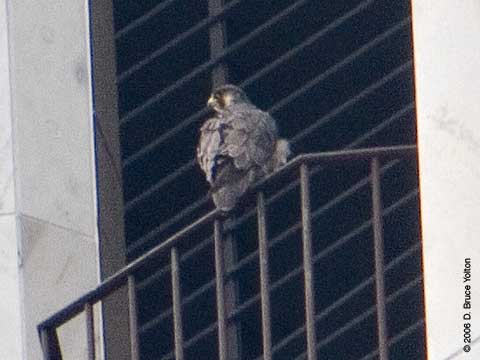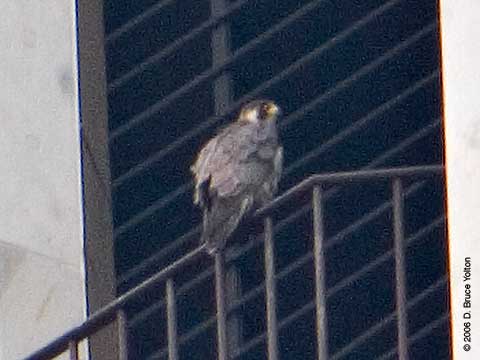Meet The Parents
Friday afternoon started with a very hazy sky, which changed to light rain before clearing. The eyasses are losing their downy appearance more and more each day.
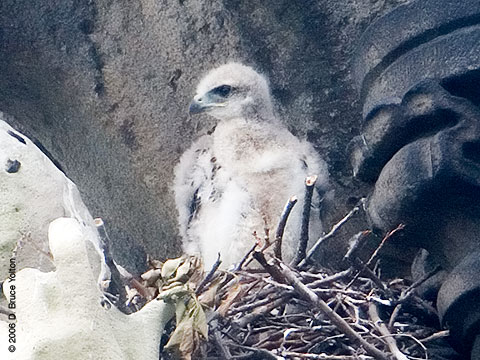
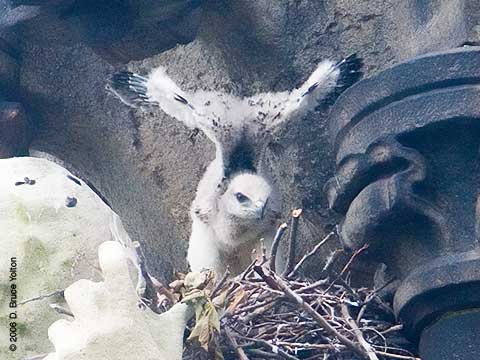
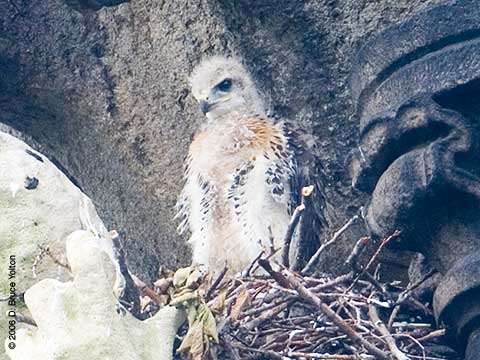
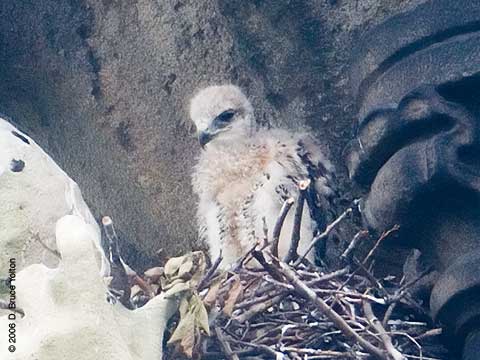
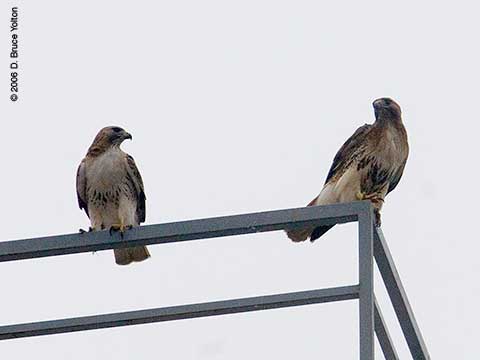
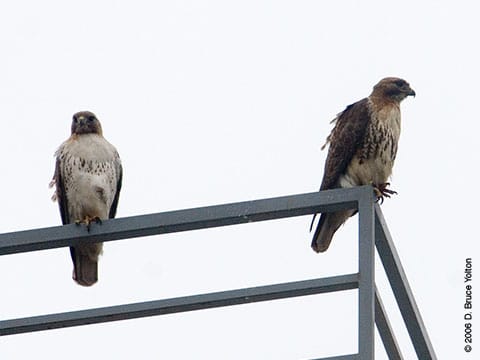
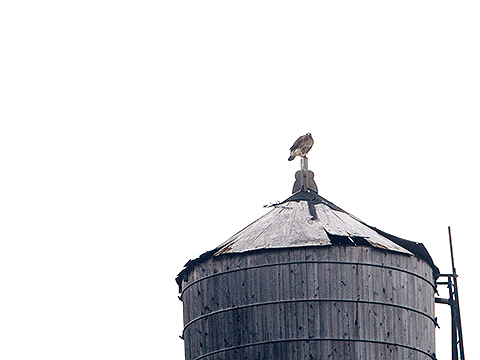
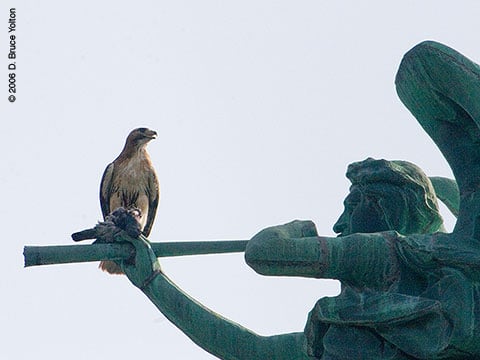
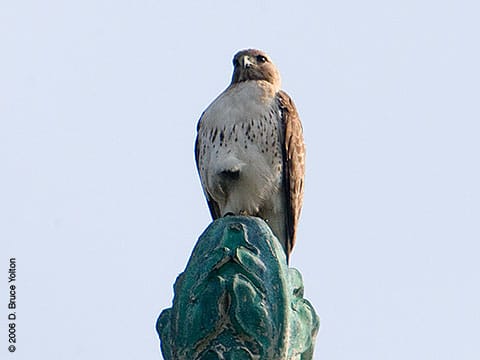
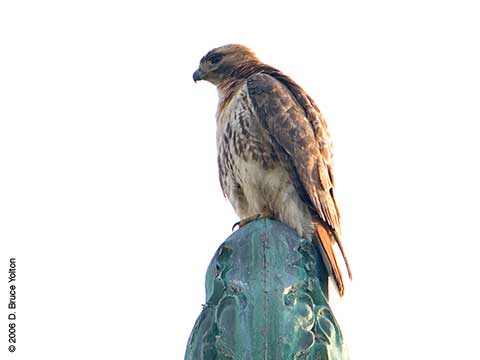
Friday afternoon started with a very hazy sky, which changed to light rain before clearing. The eyasses are losing their downy appearance more and more each day.










It was a nice evening on Wednesday with temperatures in the 70s. The warmer weather seemed to increase the activity of the mother and the eyasses.
If you come up to visit the hawks, the best view is not from Morningside Drive, but from 113th Street. From Morningside drive, turn onto the south side of 113th Street, walk about 20-30 feet west and look up at the Cathedral. On the top of the Cathedral in front of you (but below the roof line) will be two Saints together. Go two Saints to the left, and you’ll see the statue of the Apostle, St. Andrew. He has his hand up to his face. The nest is on his shoulder. This side view is the best vantage point for looking into the nest.
If you have young children, the Hawk Mountain Sanctuary web site has a great coloring book online.
Go to www.hawkmountain.org/education/HMS_coloring_book.htm and click on the Buteos link. A very large PDF will download. You’ll then be able to print out a few nice coloring book pages. (If your children want a colored page to copy from, click on the Back Cover link, and print it out.)
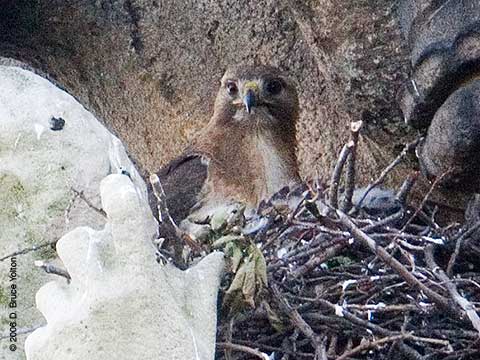
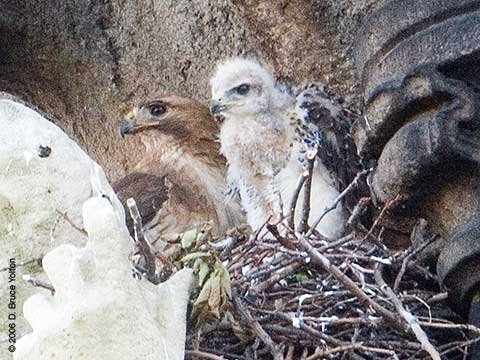
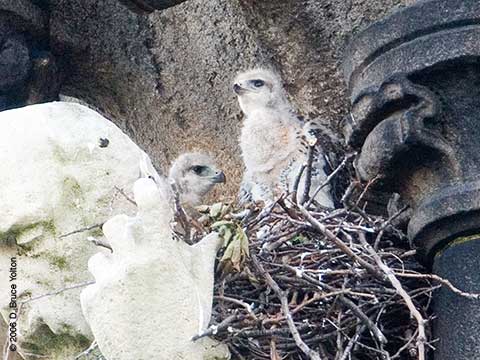
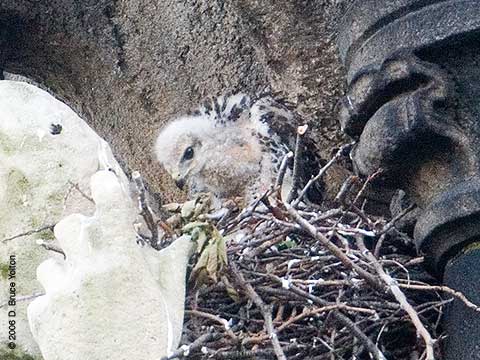
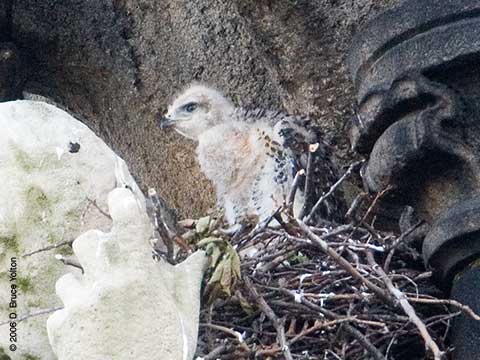
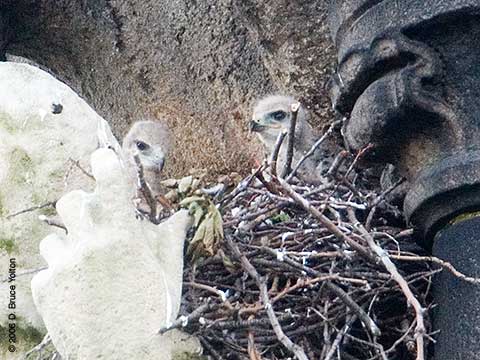
I arrived late from work around 6:30. We found the mother on a new perch about 10 feet above the nest. The perch can’t be seen from 113rd Street.
Most of the evening was quiet, with two brief bursts of eyas activity.
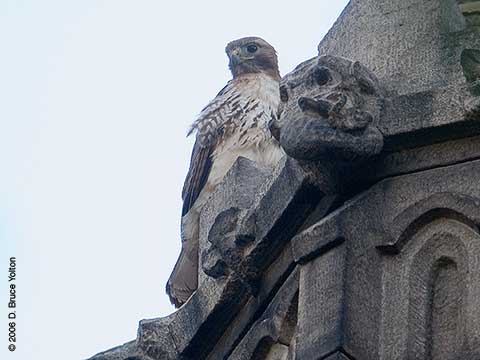
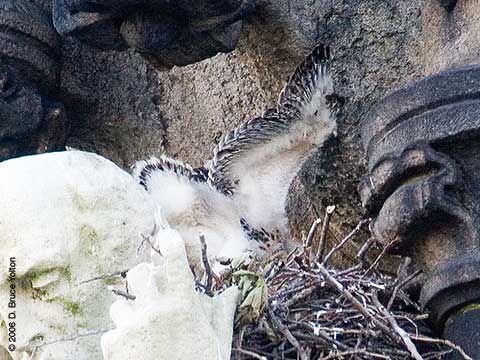
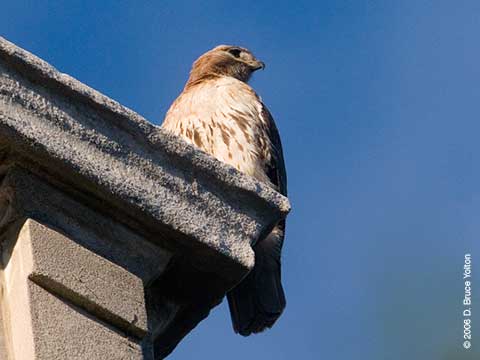
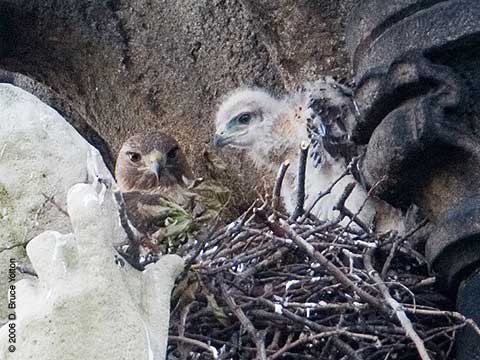
It’s been a lot of fun learning the habits of the St. John the Divine Red-tails. Each day we discover a little more about where they perch, where they hunt, and the timing of their movements and feedings.
On Monday, we found a new perch for the mother. It’s a little higher than the nest, about 15 feet south of the nest. The mother can swoop down in a second or two to the nest. It can be a little hard to see her from 113th Street, by she can easily be seen if you walk down Morningside Drive.
I had my camera on burst mode which takes a frame every 1/5 of a second. She managed to make it from the edge of one frame and completely into the nest in less than 1/5th of a second. The distance was about 4 feet. She’s quick.
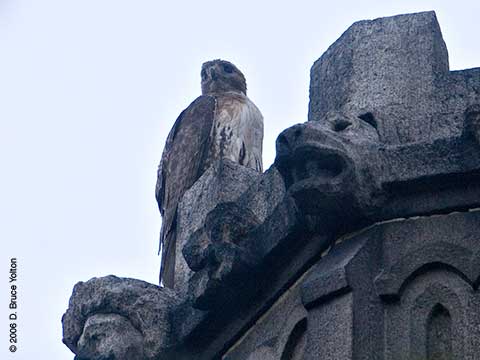
The other discovery was the difference in appearance between the two siblings, now that both are showing themselves more fully. The difference of just a day or two in age is dramatic.
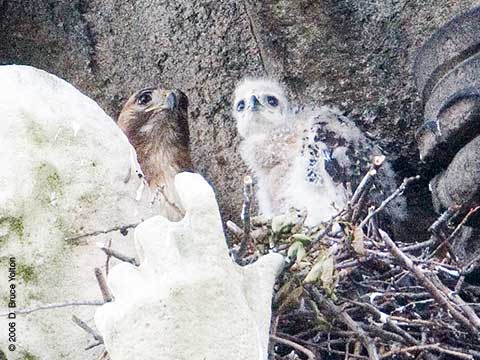
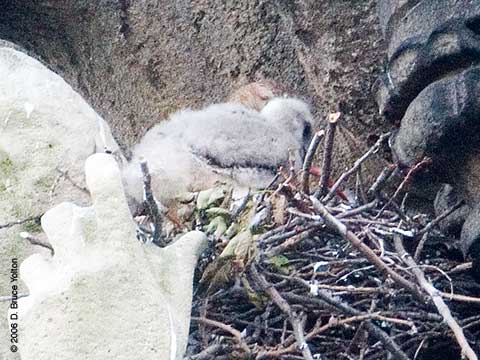
The Cathedral Church of St. John the Divine (or St. John the unfinished, since it is only partially completed) sits above Morningside Park just northwest of Central Park next to St. Luke’s Hospital.
The Cathedral has had Red-tailed Hawk nests in the years past, but I hadn’t heard any news about a current nest from any of the Central Park birders.
I had gone up to St. John the Divine looking for a nest earlier in the spring. I was trying to find out where the Red-tails in the North Woods were nesting but I didn’t have any luck finding the nest. (St. John the Divine is the largest Cathedral in the world, so I’m not surprised I didn’t find it!)
Out of the blue, Bill Green emailed me early last week, that there was a Red-tailed Hawk nest on the Cathedral. Tuesday it was raining very hard, so I had to wait until Wednesday to go up and see the nest.
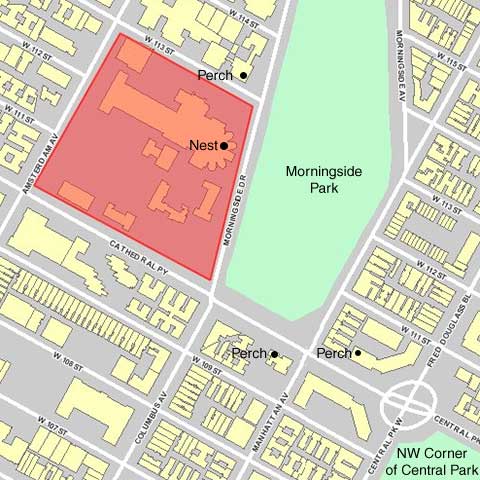
Dog walkers in the neighborhood told us that construction of the new nest began last year. (Update: James O’Brien found pictures of the nest site with just a few twigs in 2004, so construction on this nest began at least two years ago.)
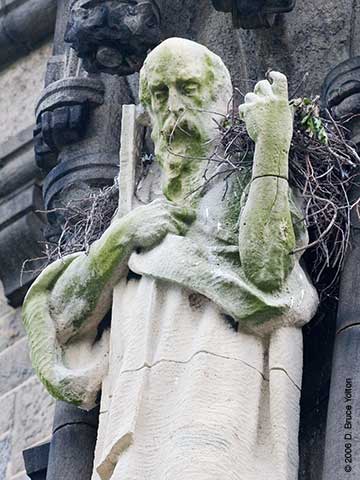
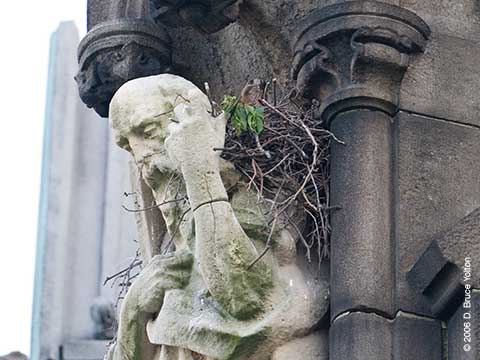
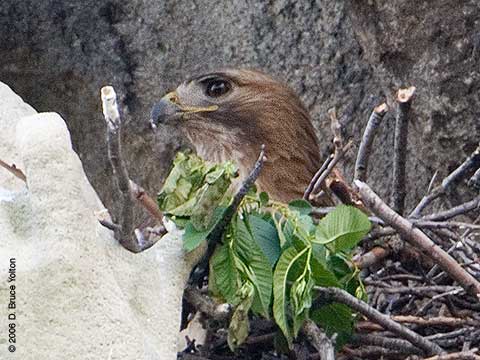
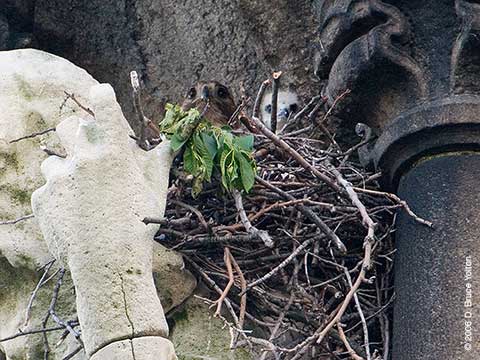
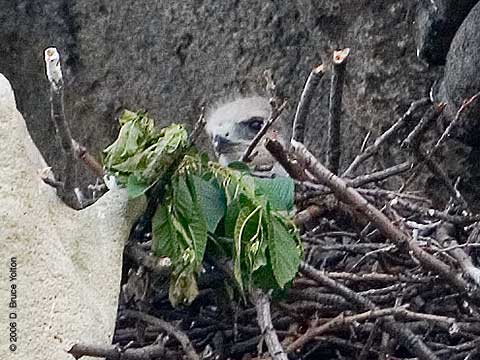
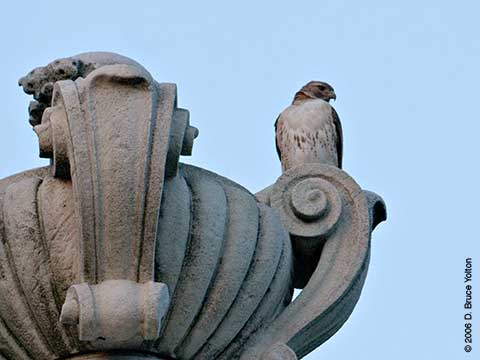
On Thursday I returned. James O’Brien, who I had told about the nest, joined me on Thursday. (James blogs at yojimbot.blogspot.com. For his perspective on the nest, take a look at his blog.)
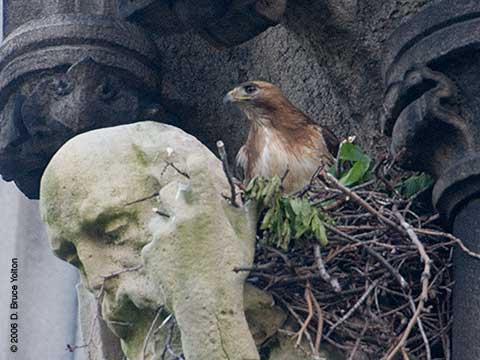
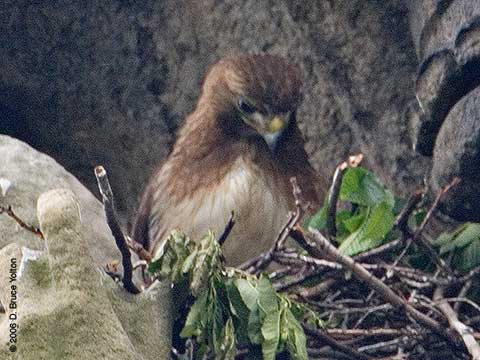
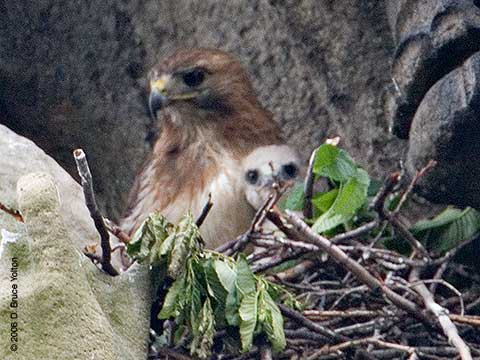
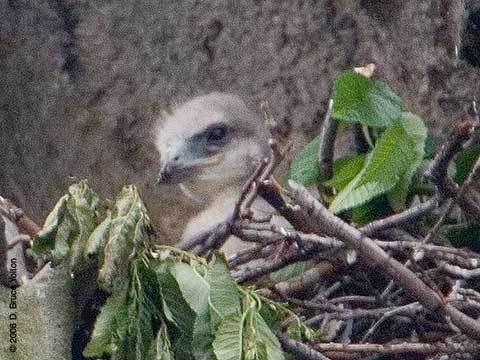
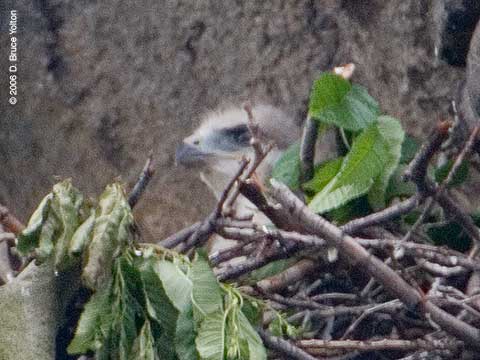
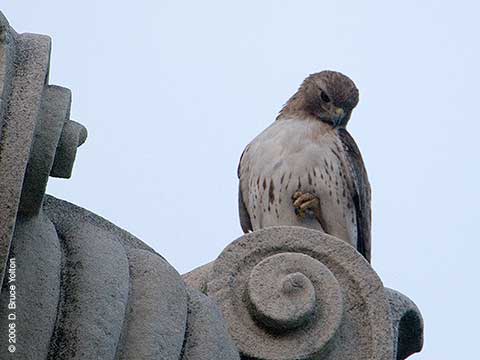
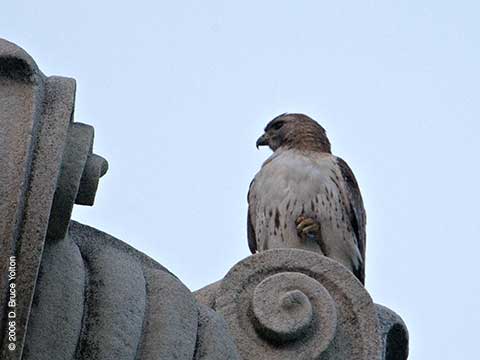
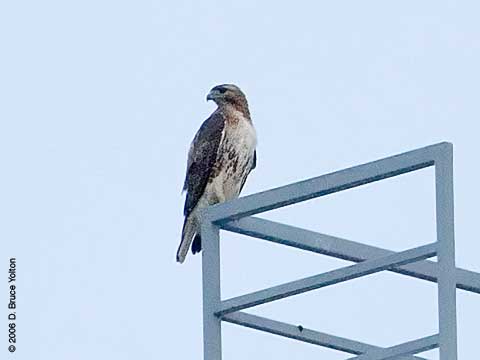
When I arrived on Friday evening, no one could be seen.
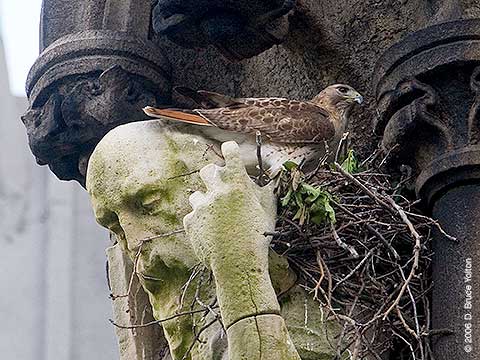
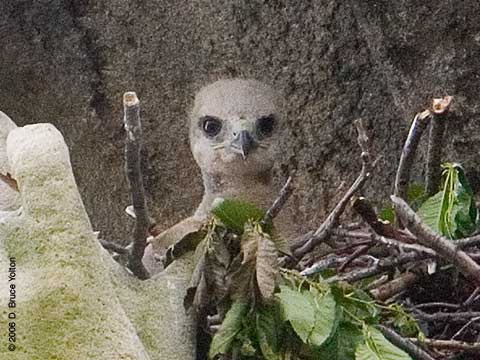
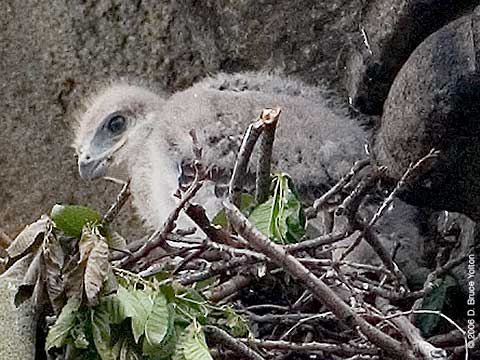
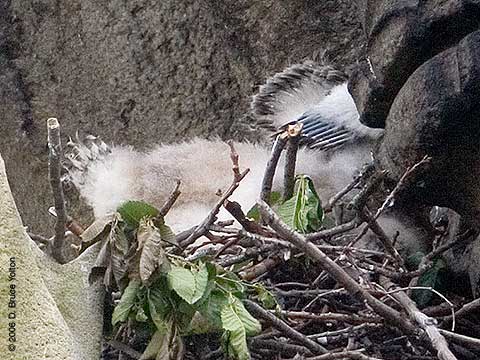
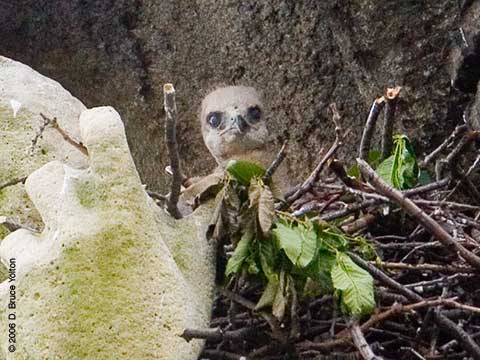
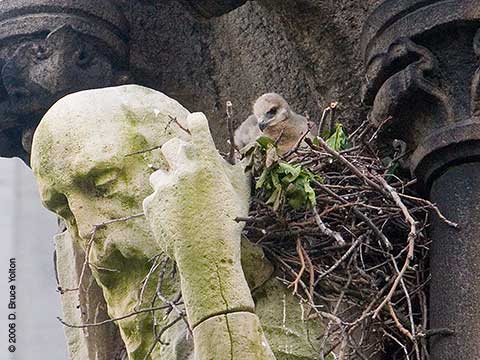
On Saturday, I spent the late afternoon at the nest.
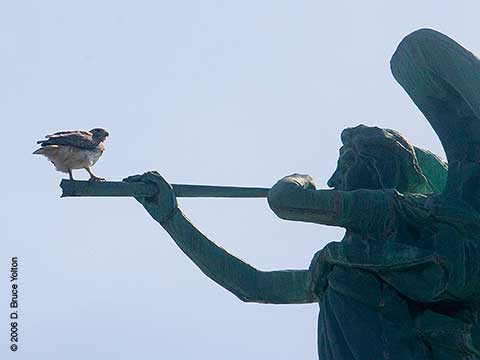
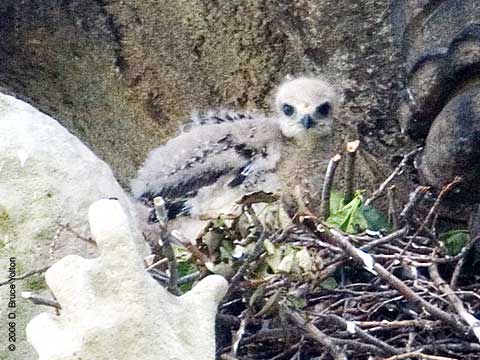
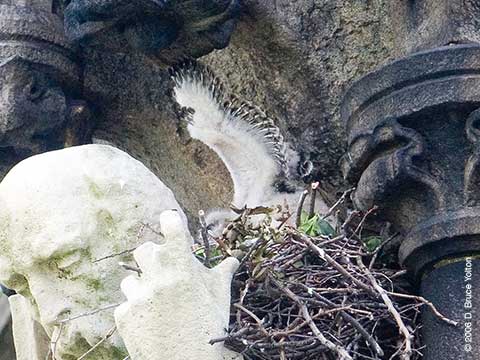
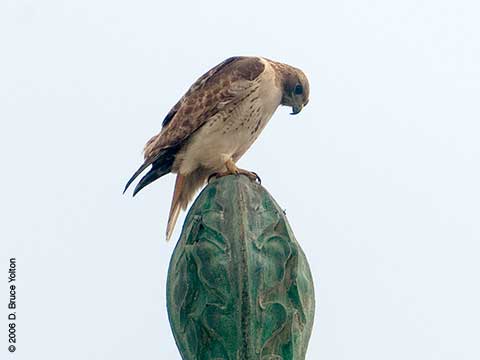
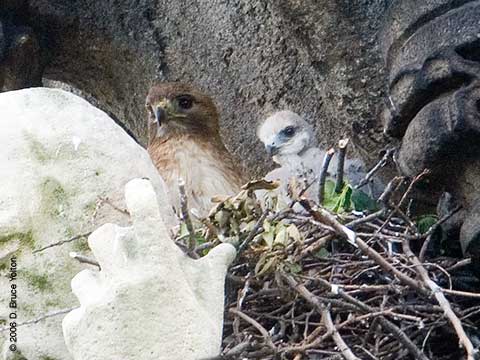
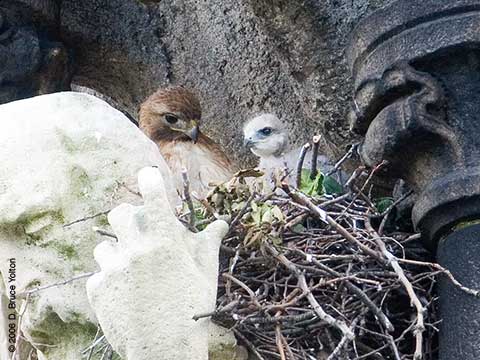
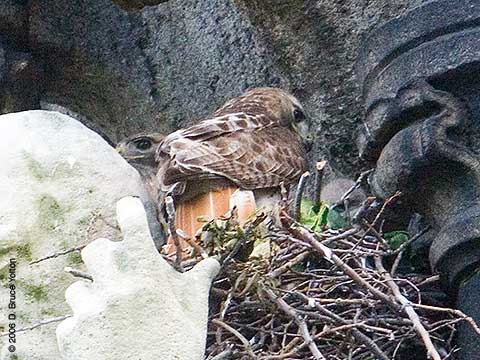
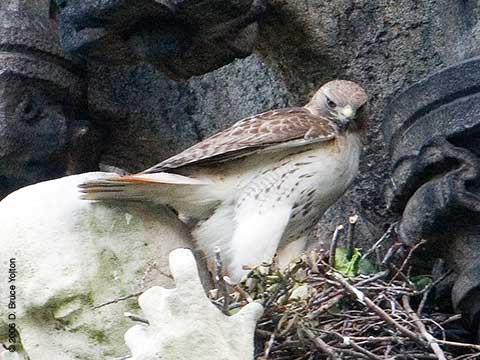
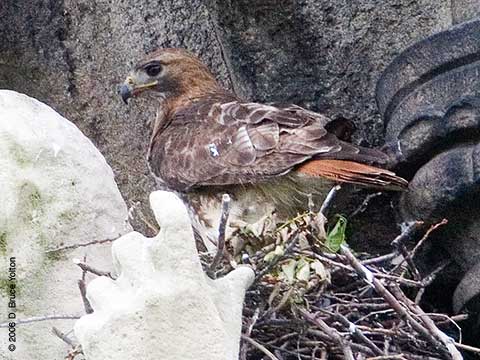
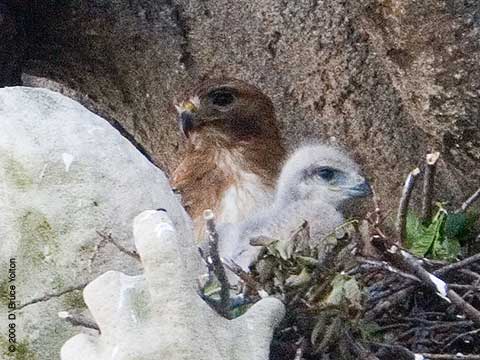
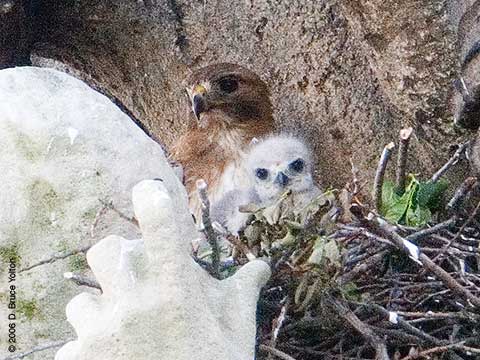
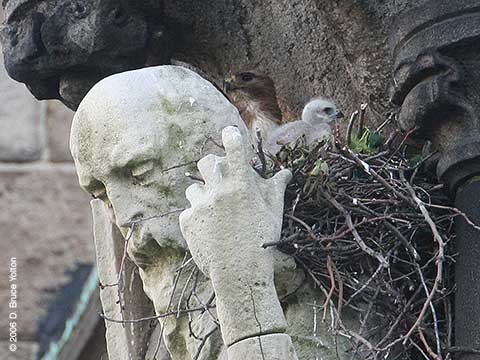
On Sunday, I spent six hours in the afternoon and evening looking at the nest.
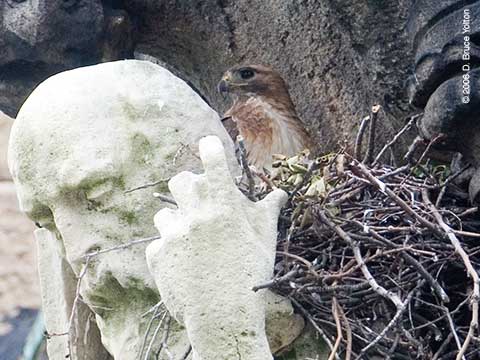
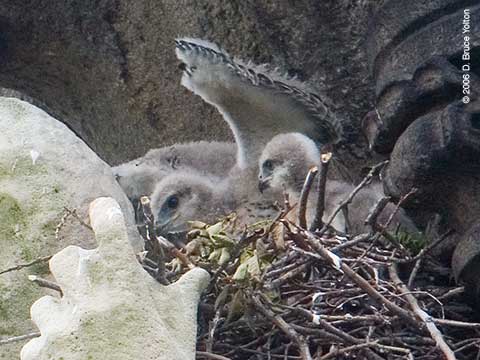
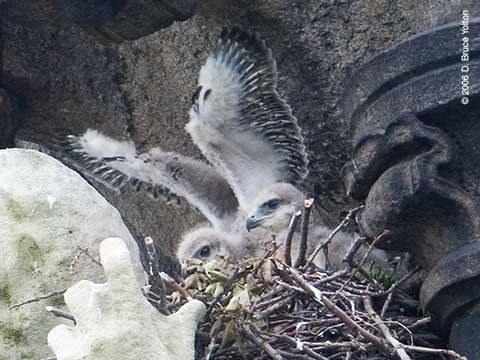
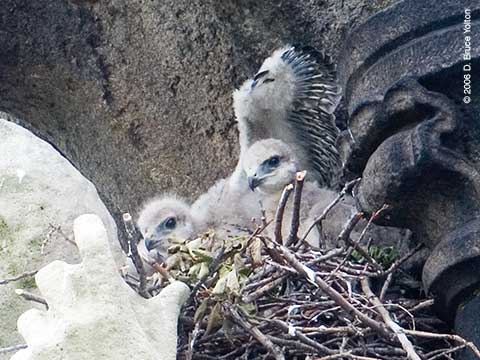
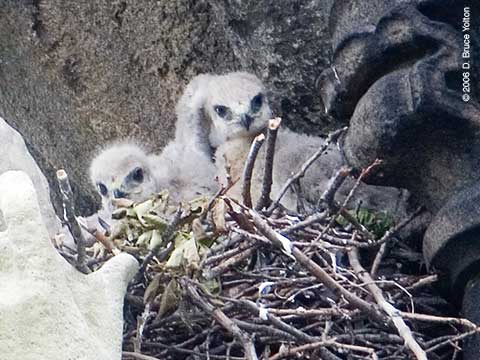
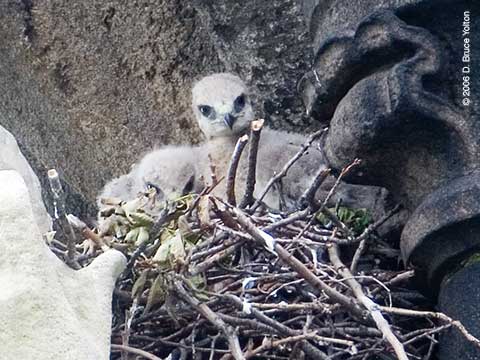
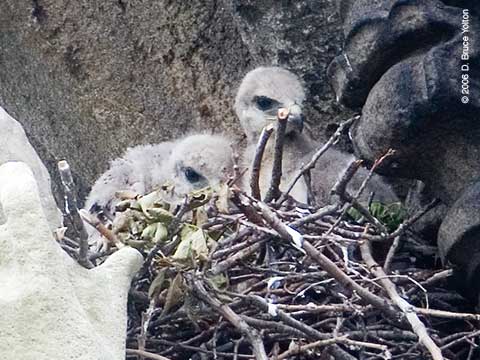
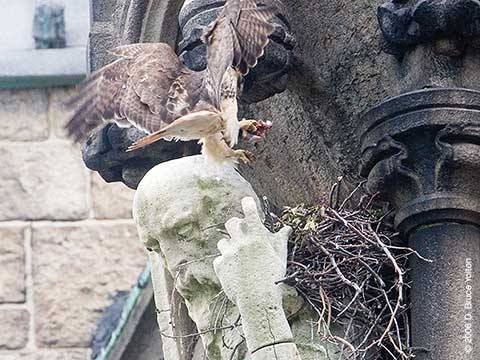
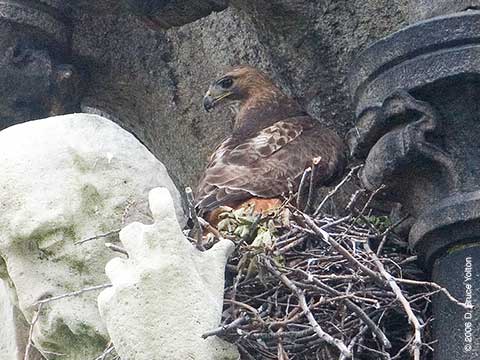
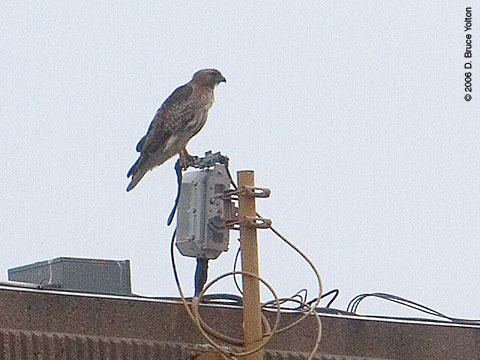
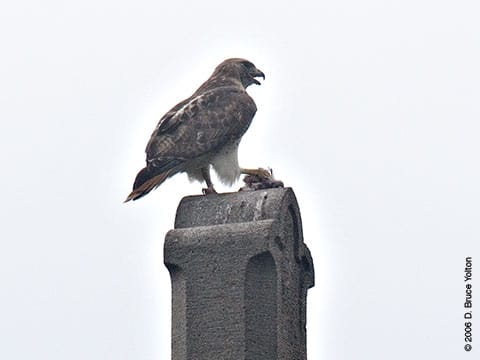
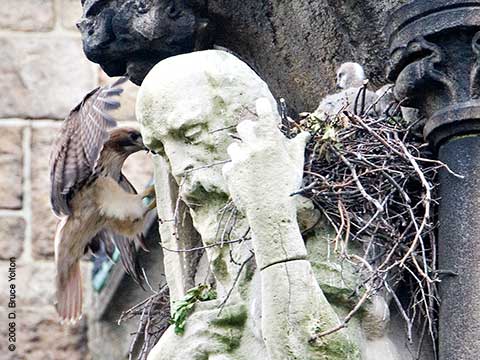
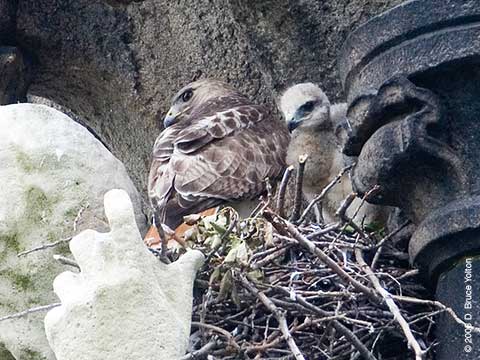
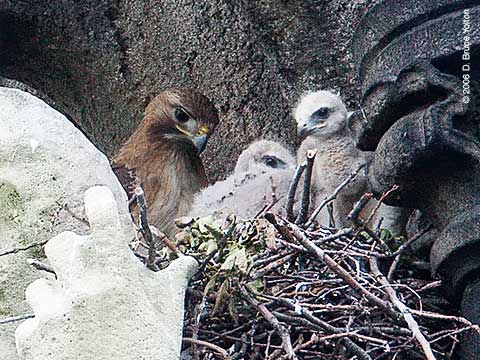
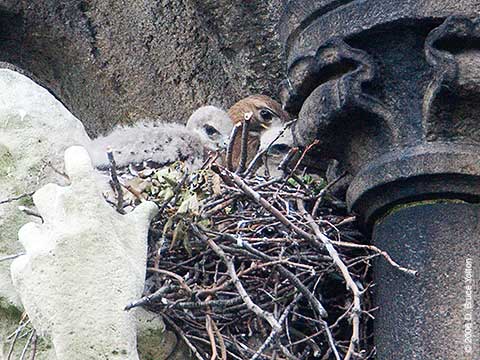
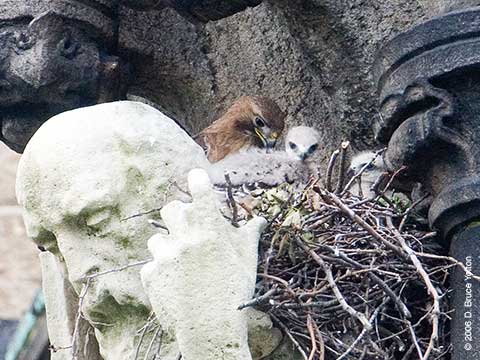
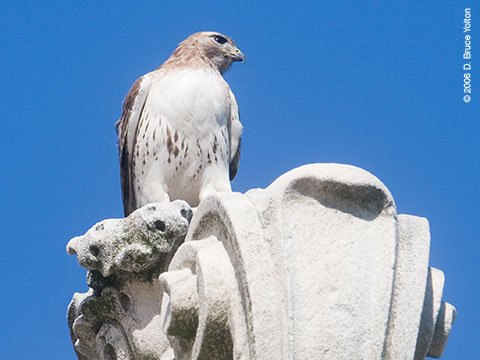
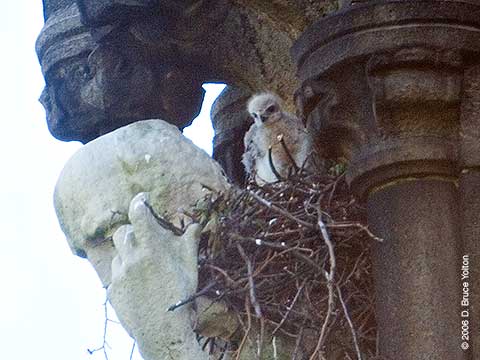
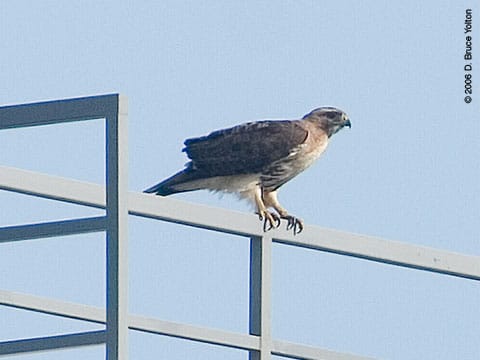
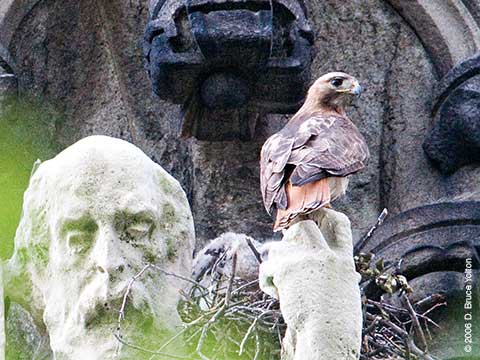
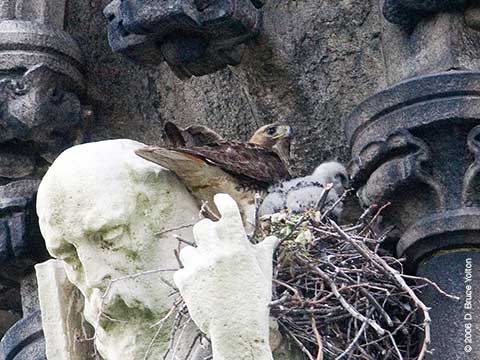
What a wonderful five days of birding.
I don’t think these birds need to be named. But if it turns out folks want to name them, I think we should ask the children of the Cathedral School to do the honors. These Red-tails are their neighborhood birds, not ours.
I spent a lot of time on 113th Street these last five days, and if you live in Morningside Heights, you should be proud of your neighbors. I met the nicest people. They shared their knowledge of the hawks, asked great questions, welcomed me and had the manners you would expect to see in a small town. It was nice to discover that Morningside Heights is a real neighborhood.
If you go up to see the nest, don’t expect instant gratification. There are long periods where the parents can’t be seen and the young are sleeping. Expect to spend an hour or two. If it’s too boring, you can go to Morningside Park, do some birding and come back. You will need binoculars, but you don’t need a telescope.
On Wednesday, I attempted to get more photographs of the Peregrine Falcons on the General Motors building. This is the best I could do. They’re very far away!
The 55 Water Street pair’s chicks have hatched. To view them go to www.55water.com/falcons and click on the Live Birdcam link.
